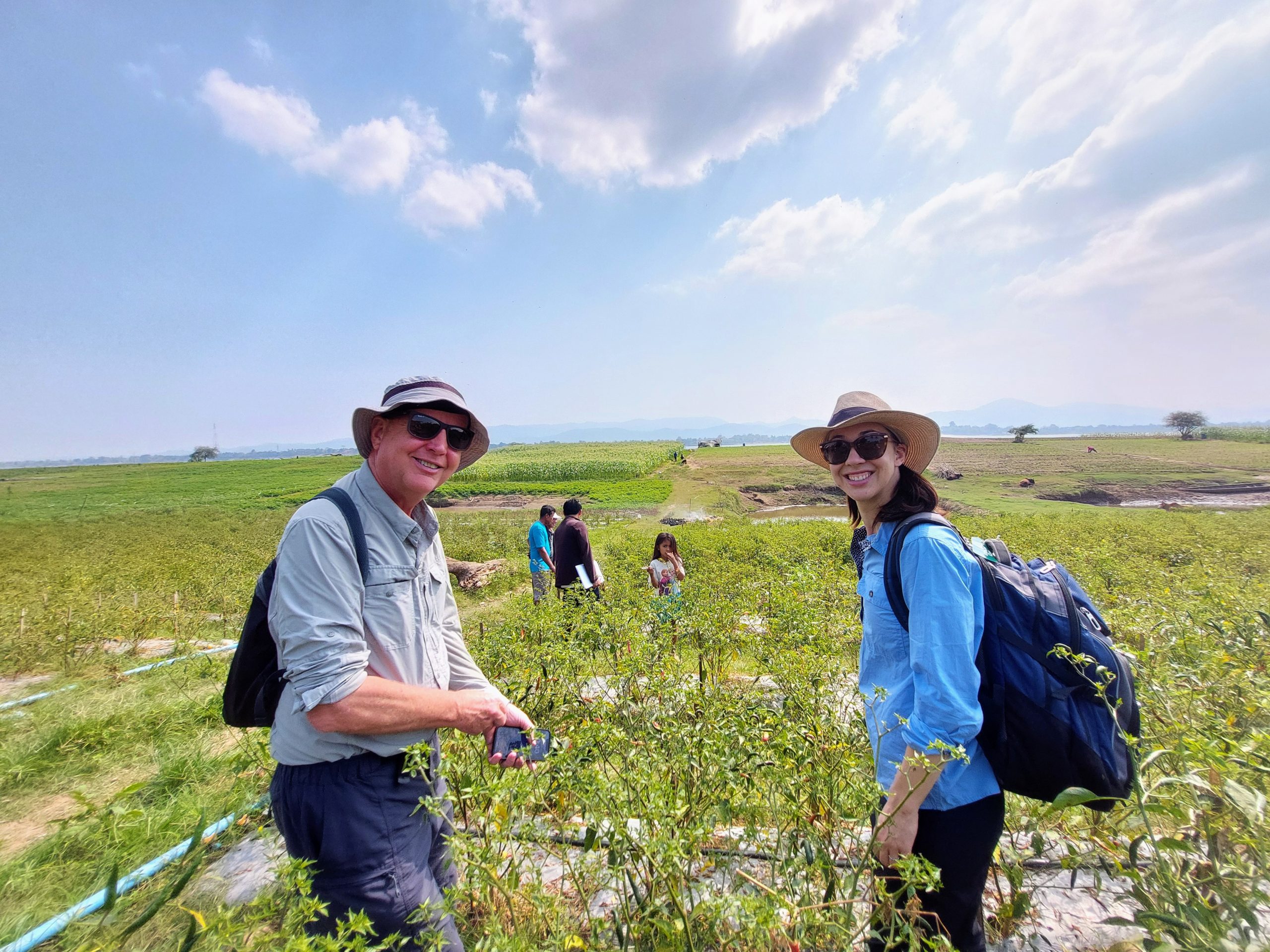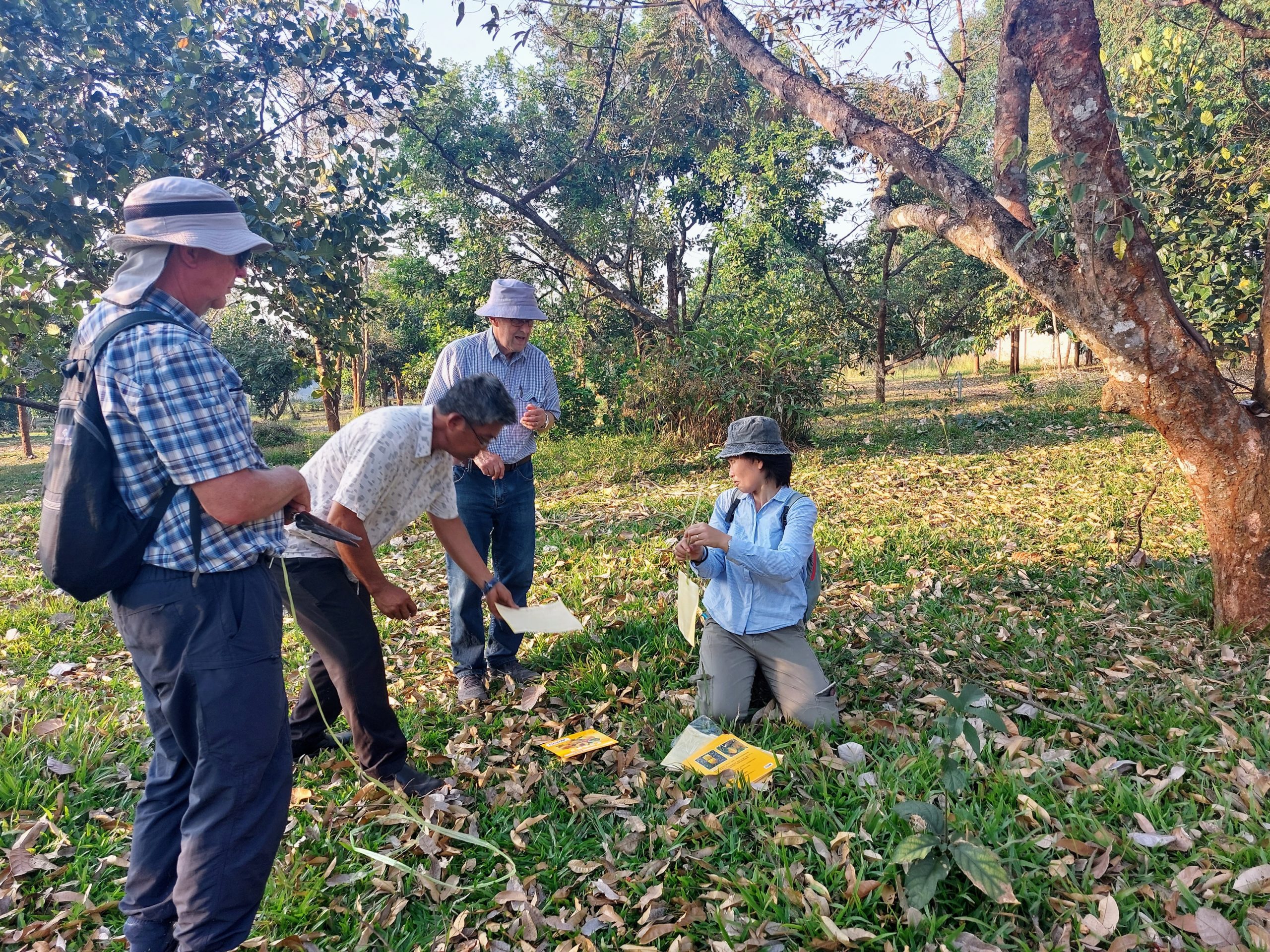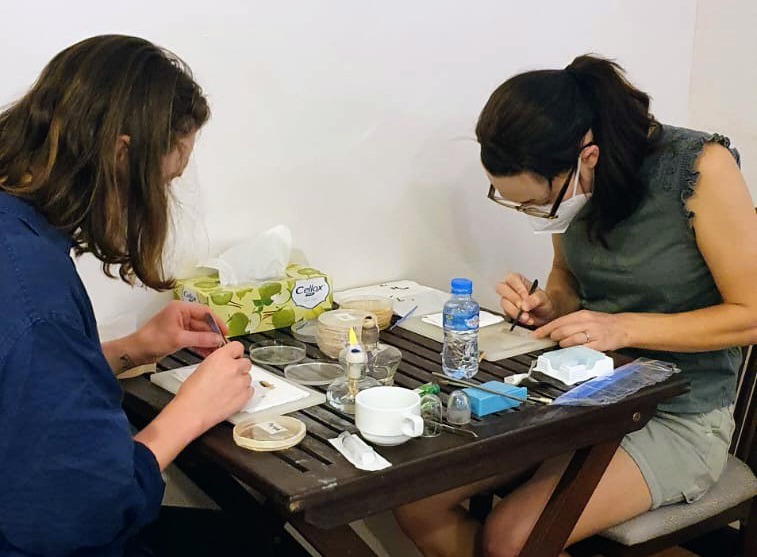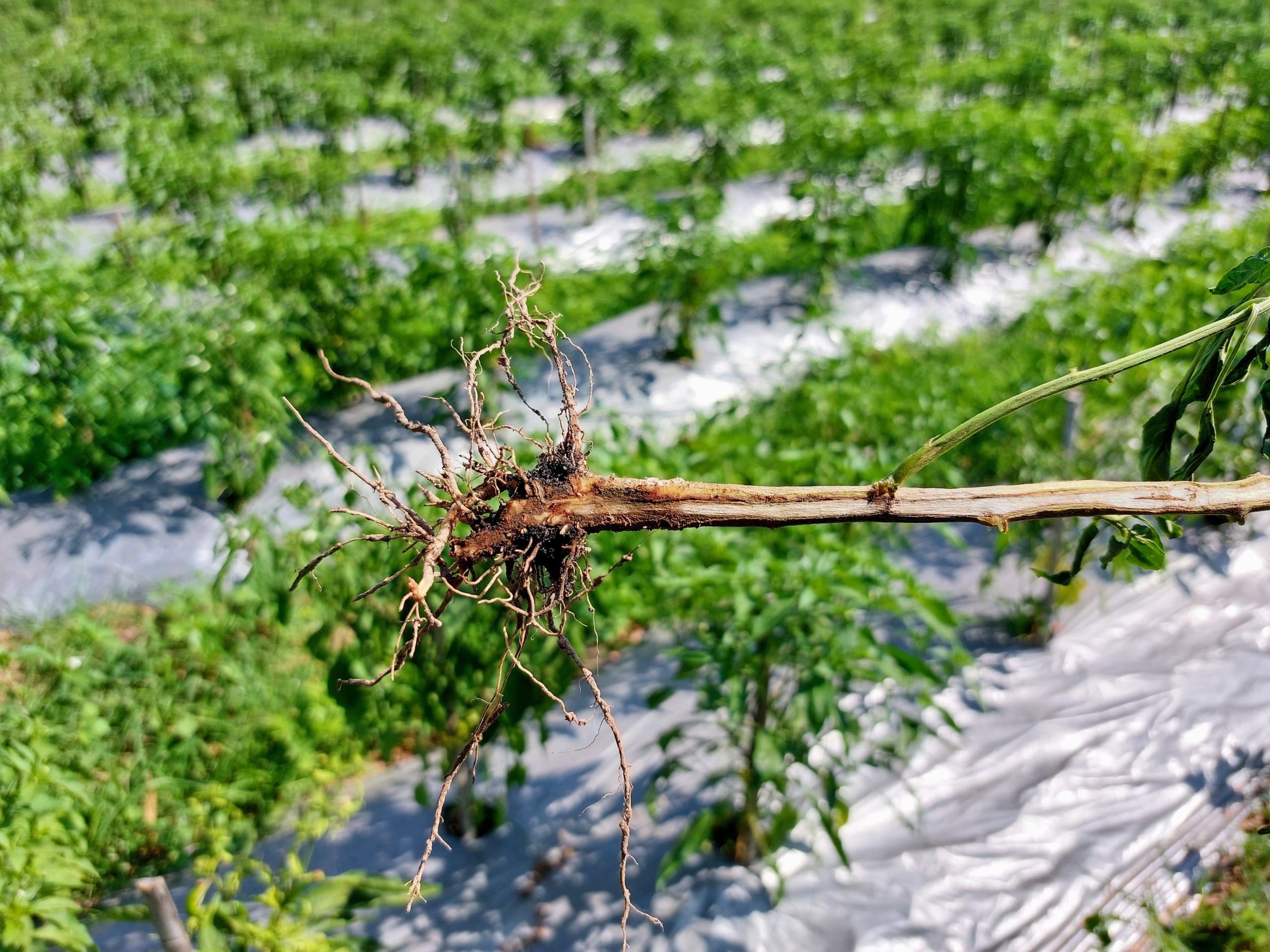

More plant pest and disease training and mentoring in Laos
June 20, 2023

The Crawford Fund’s NSW and SA Committees recently jointly supported a training and mentoring visit to Laos, where Crawford Fund Medal awardee Professor Lester Burgess has been delivering mentoring and training activities with the support of the NSW Committee for many years.
Dr Tara Garrard, a plant pathologist from SARDI, was supported by the SA Crawford Fund Committee, and Lucy Horne an undergraduate from the University of Sydney was supported by the NSW Crawford Fund Committee to travel to Laos in February. Both committees supported Dr Dao Thi Hang, an entomologist from the Department of Crop Protection in Hanoi to attend the training too.
Dr Hugh Wallwork, a retired plant pathologist helped deliver the training, and the group was joined by other Provincial Agriculture and Forestry Offices (PAFO) staff from Pakse at different times to deliver:
- Training for Mr Vieng, a technical officer in PAFO, Pakse, in Laos and other Lao Government staff and locals in the identification and management of diseases in crops.
- Training for Tara Garrard and Lucy Horne in extension and research work in developing countries.
- Identification of diseases and pests present in crops and advice on their management to help local growers.
- Publication of disease records to assist in future Laos and Australian biosecurity and trade issues as they arise.
The experience included a myriad of crop pests and diseases for the research team and their trainers to sink their teeth into.

Crops investigated included cabbage, chillies, egg plant, morning glory, amaranth, tomatoes, peppers, black peppers, peas, maize and citrus, durian, jack fruit, mango and banana orchards.
The pests and diseases identified include Severe virus, Phytophthora, stem rot infection, bacterial wilt, stem borers, root knot nematodes, Water convolvulus, citrus scale parasites, Fusarium wilt, root rots, Rhizoctonia, Calonectria leafspot, fall armyworm, stem borer and club root.
“Huanglongbing (HLB) or citrus greening disease was identified as a major problem in citrus crops at many sites and in trees along roadsides throughout the visit,” said Tara.
A new Tomato leaf miner, Tuta absoluta, was identified for the first time in Laos by Dr Hang.

The team also visited the PAFO Field Station and nursery near Pakse where fruit tree seedlings are being grafted and sold to farmers. This was a site that Lester had helped establish in earlier years to produce stock that was free of Phytophthora. Further advice was given to improve the disease-free status of the saplings.
During the trip, Tara and Lucy successfully isolated 12 cultures from plant and soil samples that were submitted to the ICMP’s international culture collection. From the submissions ICMP staff were able to revive and retain 11 cultures for storage and DNA analysis. Preliminary DNA results received from ICMP showed several cultures worthy of further investigation.
- Four cultures from Phytophthium and Pythium were identified with one potentially a new genus and species (CHA-553).
- Two bacterial cultures of interest confirmed bacterial leaf spot on Chinese lettuce (CHA-561)
- Bacterial wilt of chilli with an unconfirmed species that warrants further analysis (CHA-550).
- Calonectria pseudoreteauddii was isolated from macadamia on a previous trip by Andrew Daly and a culture of this pathogen (CHA-557) was obtained on this trip and used in pathogenicity assays by Vieng.
- Two cultures of Neopestalotiopsis were obtained from mango and avocado leaves and are both potentially new species (CHA-556, CHA-558).

The Neopestalotiopsis cultures have been identified as the first priority for further investigation upon the return from Laos. Lester and Tara will continue to work on molecular identification and species description. Results will be published in a peer review journal later this year. Papers detailing first reports of the other findings will follow.
“These publications provide valuable information for both Laotian and Australian scientists in surveillance and biosecurity,” concluded Tara.
Tara was a Crawford Fund Conference Scholar in 2019, where she was introduced to Lester Burgess as her mentor. Following the event, she wrote: “Meeting my mentor Lester Burgess was a highlight of the program for me as he has an extensive amount of knowledge and experience in my field of plant pathology. His passion and enthusiasm for his work is contagious and has inspired me to volunteer overseas in the future.”
It is wonderful that inspiration turned to reality for Tara!




